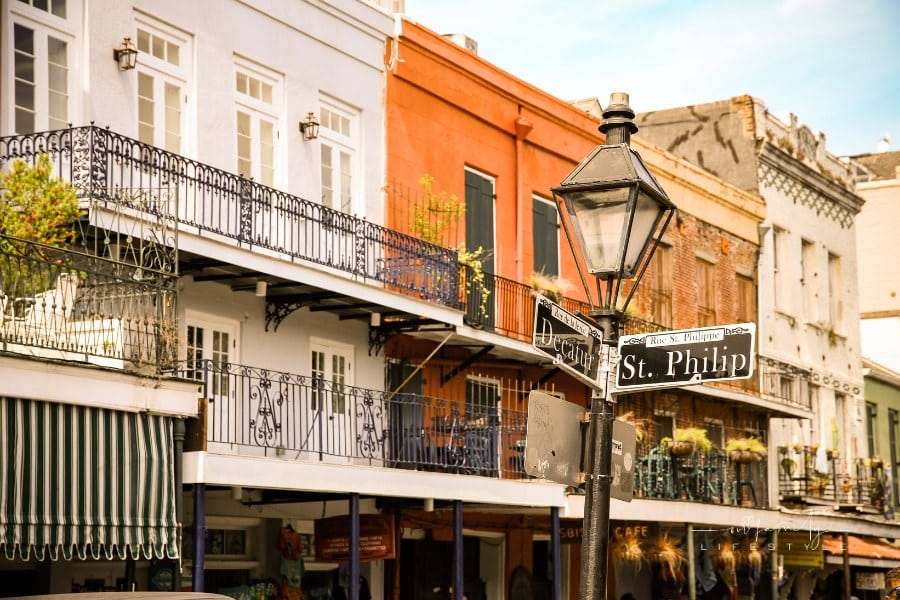Crescent City Chronicles: Exploring the Heart and Soul of New Orleans
New Orleans, often called the “Crescent City,” is where history, culture, and vibrant energy converge to create an experience unlike any other.
Nestled along the banks of the mighty Mississippi River, this iconic city in Louisiana is a tapestry of influences, from French, Spanish, and Creole to African, Caribbean, and American.

Heart and Soul of New Orleans
This guide will embark on a journey through the heart and soul of New Orleans, uncovering its rich history, diverse neighborhoods, delectable cuisine, soul-stirring music, and the indomitable spirit that defines this incomparable city.
A Tapestry of History: The French Quarter
The French Quarter stands as the historic heart of New Orleans, a district steeped in centuries of tales, tragedy, and triumph.
Cobblestone streets wind past ornate iron balconies while the scent of Creole cuisine mingles with the notes of jazz that echo through the air.
With its iconic triple spires, St. Louis Cathedral presides over Jackson Square, a gathering place for artists and musicians.
Hidden courtyards, historic homes, and lively marketplaces lie within the quarter’s narrow alleys.
It’s where history comes alive, and each step is a journey through time.
The architecture of the French Quarter is a testament to its diverse cultural heritage and one of the big attractions when people are deciding where to stay in New Orleans, staying close to these attractions allows visitors to truly immerse themselves in the New Orleans culture.
Creole townhouses with distinctive galleries stand alongside elegant Spanish colonial buildings, all bearing witness to the city’s rich past.
The preservation of these architectural treasures is a testament to the city’s commitment to honoring its history, making the French Quarter a living museum for residents and visitors alike.
The Rhythm of the Streets: Music and Culture
New Orleans is often hailed as the birthplace of jazz, a genre that pulses through the city’s veins like a heartbeat.
Music is an integral part of life in the Crescent City, from the lively brass bands that parade through the streets to the soulful melodies emanating from smoky jazz clubs.
Frenchmen Street, known for its eclectic live music venues, offers a taste of the vibrant music scene that thrives in the city.
Preservation Hall, a historic venue in the heart of the French Quarter, is a hallowed space where traditional jazz is celebrated reverently.
Beyond jazz, New Orleans is a city of diverse musical influences. Blues, gospel, funk, and zydeco all find their place in the city’s musical tapestry.
Each neighborhood has its unique sound, from the soulful tunes of Treme to the lively beats of the Marigny.
Music in New Orleans isn’t confined to concert halls; it spills into the streets, infusing the city with a palpable energy that sets it apart.
Culinary Delights: The Flavors of Creole and Cajun Cuisine
New Orleans is a culinary mecca, where every dish tells a story, and every bite celebrates flavor.
Creole and Cajun cuisine, two distinct yet intertwined culinary traditions, are at the heart of New Orleans’ gastronomic identity.
From gumbo to jambalaya, étouffée to po’ boys, the city’s iconic dishes reflect the blend of French, Spanish, African, and Caribbean influences that have shaped its culinary landscape.
The city’s culinary scene extends far beyond its celebrated restaurants. Street vendors offer delectable treats like beignets and powdered sugar-dusted pastries, a beloved local staple.
Farmers and seafood markets brim with fresh, locally sourced ingredients, showcasing the city’s commitment to sustainable and seasonal dining.
Exploring New Orleans through its food is a journey of discovery, a sensory adventure that reveals the essence of the city’s culture and heritage.
Neighborhoods of Character: Bywater and Treme
Beyond the French Quarter, visitors will discover neighborhoods that pulse with their unique character.
With its colorful shotgun houses and vibrant street art, Bywater exudes a bohemian charm. It’s a neighborhood where artists, musicians, and free spirits find their sanctuary.
The levee along the Mississippi River offers sweeping views of the city skyline, making it a favorite spot for locals and visitors alike.
Treme, one of the oldest African-American neighborhoods in the country, is a living testament to the city’s rich cultural heritage.
Known as the “Birthplace of Jazz,” Treme’s streets are alive with the sound of music, and its historic sites, such as Congo Square and the Backstreet Cultural Museum, pay homage to the contributions of African Americans to the city’s cultural tapestry.
Treme’s resilience and spirit are palpable, and a visit to this neighborhood is a tribute to the indomitable soul of New Orleans.
On that colorful note
New Orleans, the Crescent City, is a place of contrasts and convergences, where history mingles with the present and tradition dances with innovation.
From the storied streets of the French Quarter to the rhythm of live music that permeates the air, every corner of this city tells a tale.
The flavors of Creole and Cajun cuisine, the vibrant neighborhoods of Bywater and Treme, and the indomitable spirit of its people all contribute to the unique allure of New Orleans.
Exploring this city is a journey of immersion, a chance to uncover the heart and soul of a place that has captivated the world.
It’s an invitation to be swept away by the rhythm of the streets, the flavors of its kitchens, and the warmth of its people—a genuine encounter with the essence of the Crescent City.


